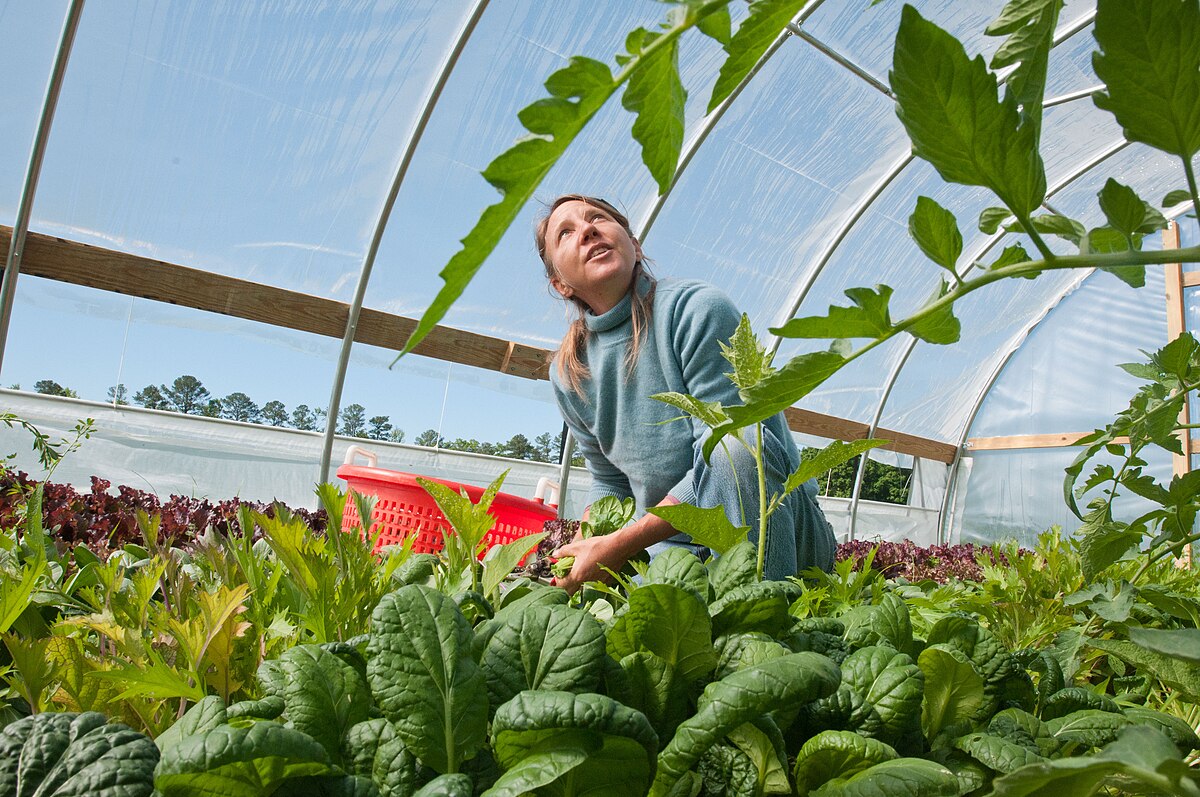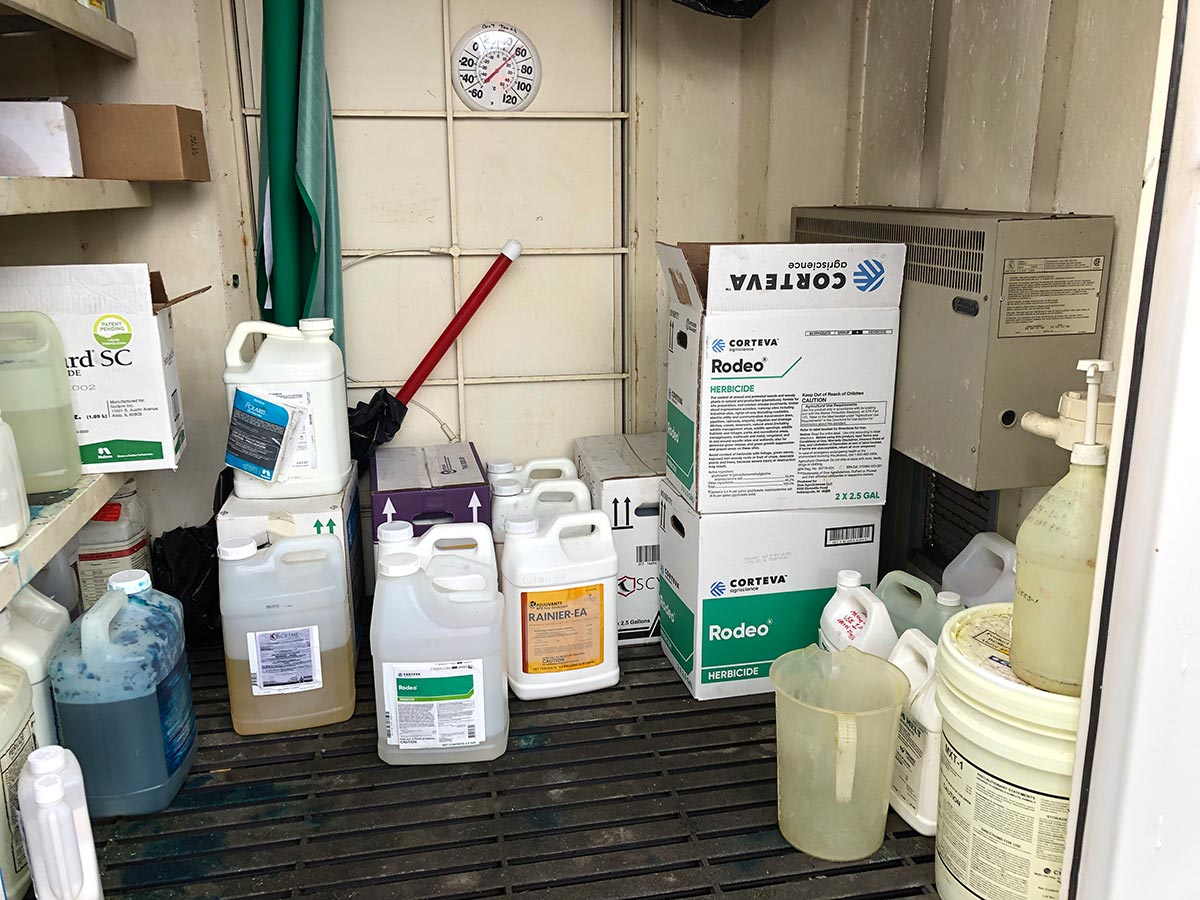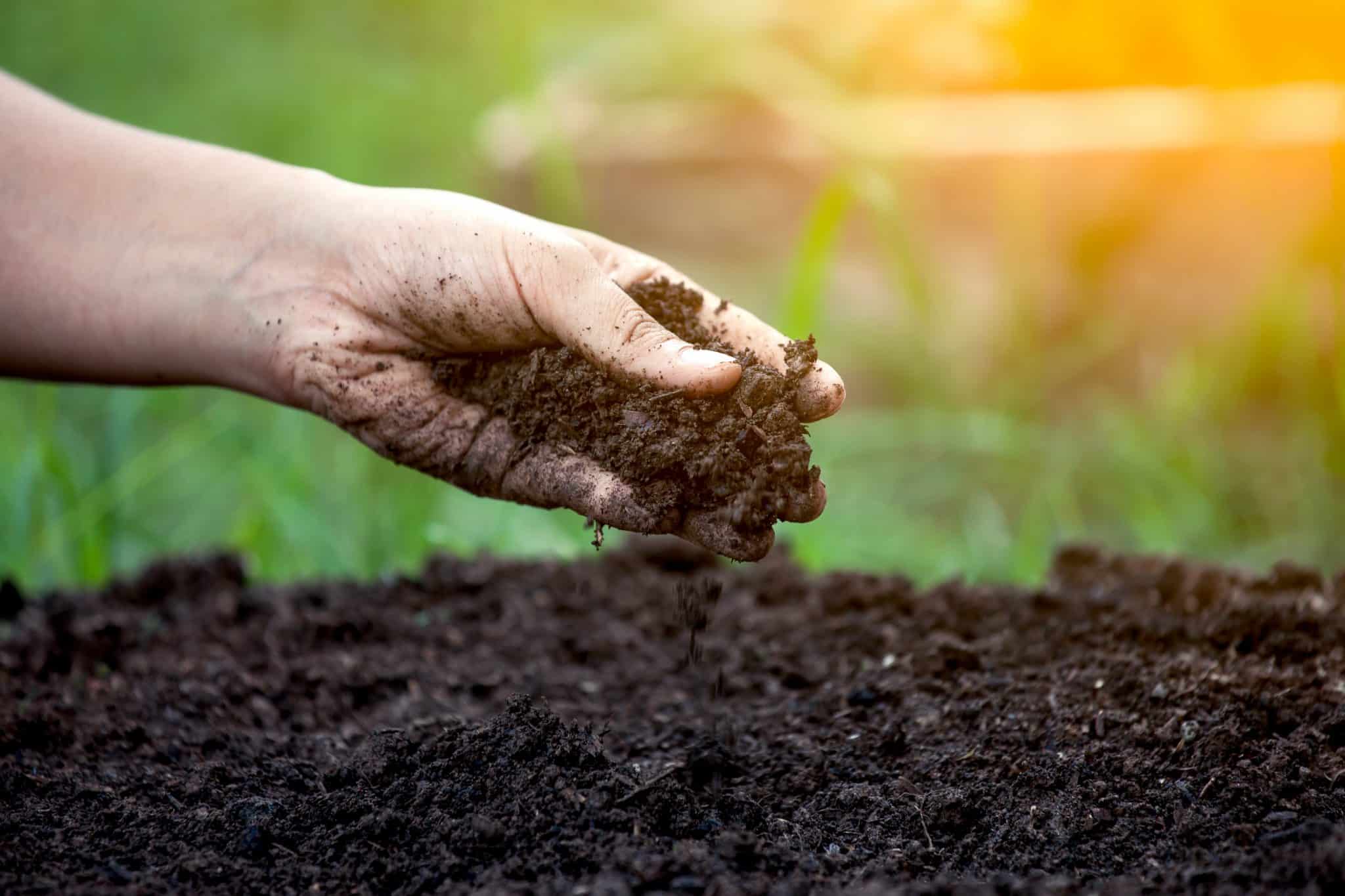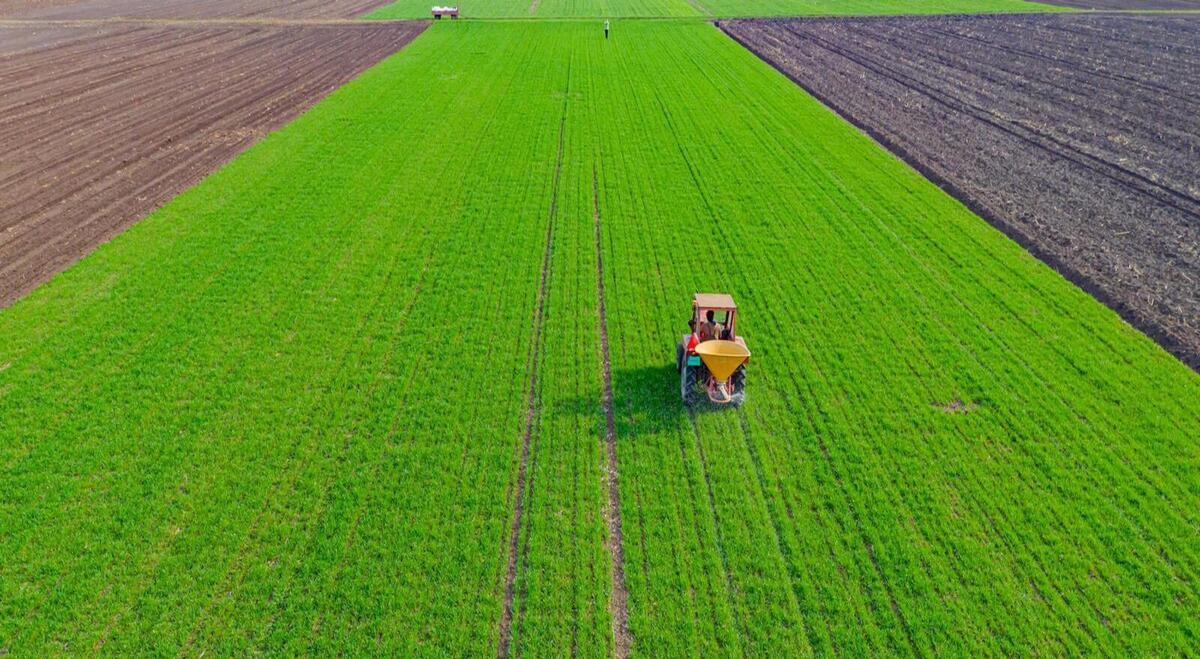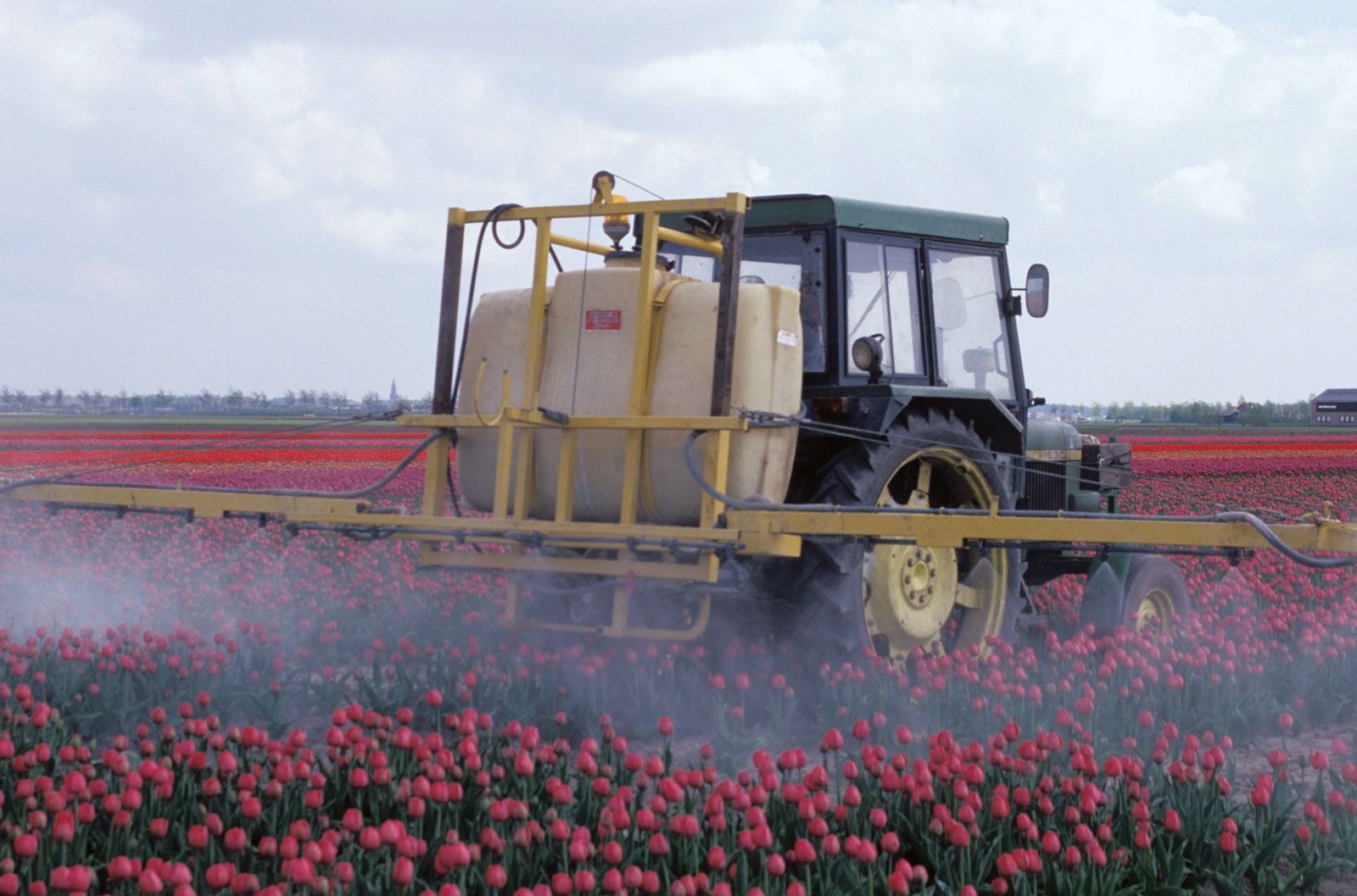Home>Gardening News and Trends>Latest News>What Cause Of Land Pollution Uses Chemicals Such As Pesticides And Herbicides
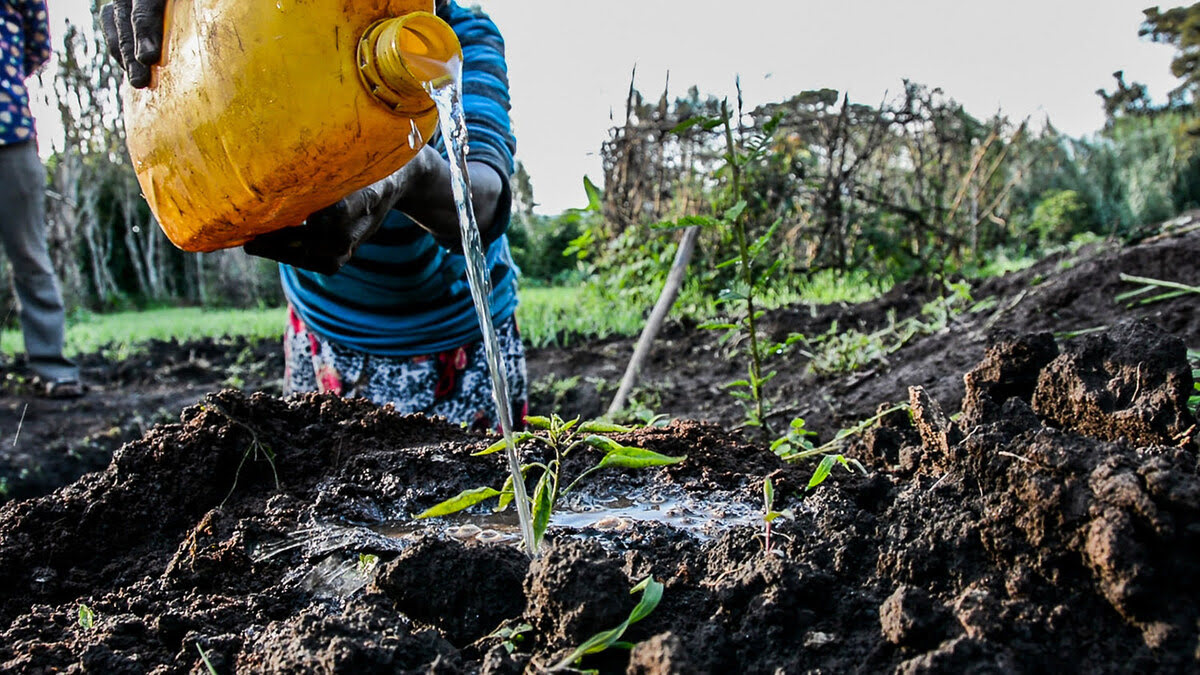

Latest News
What Cause Of Land Pollution Uses Chemicals Such As Pesticides And Herbicides
Modified: February 10, 2024
Discover the latest news on the causes of land pollution, including the use of chemicals like pesticides and herbicides. Stay informed and take action to protect our environment.
(Many of the links in this article redirect to a specific reviewed product. Your purchase of these products through affiliate links helps to generate commission for Chicagolandgardening.com, at no extra cost. Learn more)
Table of Contents
Introduction
Land pollution is one of the major issues facing our planet today. It refers to the contamination and degradation of land resources, including soil, water, and air, due to human activities. The impact of land pollution is not only detrimental to the environment but also poses serious risks to human health and wildlife populations. Understanding the causes and consequences of land pollution is essential in order to implement effective solutions and prevent further damage to our ecosystems.
Land pollution can take various forms, including the dumping of solid waste, industrial activities, and the use of harmful chemicals. In this article, we will focus on the specific use of chemicals, such as pesticides and herbicides, and their contribution to land pollution. These chemicals, while intended to protect crops and manage pests, can have severe negative effects on the environment and lead to long-term damage.
The excessive use of pesticides and herbicides in agriculture has become a common practice in modern farming. These chemicals are applied to crops to control pests, diseases, and unwanted plants. However, the overreliance on these chemicals can have serious consequences for the environment and our health.
The use of pesticides and herbicides can result in both immediate and long-term effects on the land. Immediate effects include the contamination of soil, water, and air, as these chemicals can leak into nearby water bodies, seep into the ground, or become airborne through volatilization.
Moreover, the long-term effects of chemical use on land can be even more concerning. Prolonged exposure to these chemicals can lead to soil degradation, reduction in biodiversity, disruption of ecosystems, and contamination of underground water sources. These chemicals can persist in the environment for a long time, posing risks to future generations.
Definition of Land Pollution
Land pollution, also known as soil pollution or land degradation, refers to the deterioration of the quality and health of the land due to human activities. It occurs when harmful substances, such as chemicals, toxins, or solid waste, are introduced into the soil, altering its natural composition and disrupting the ecological balance.
Land pollution can occur in both rural and urban areas and can have widespread and long-lasting impacts on ecosystems, vegetation, wildlife, and human health. The pollution can affect not only the surface of the land but also the underlying soil layers, as well as the water and air surrounding the contaminated areas.
There are several sources and causes of land pollution, including industrial activities, agricultural practices, improper waste disposal, and the use of harmful chemicals. These pollutants can have immediate and long-term effects on the environment and can contaminate the land for years or even decades.
Contaminated land can have a variety of negative consequences. It can negatively impact agricultural productivity, making soil infertile and reducing crop yields. It can also contaminate water sources, polluting groundwater and affecting the quality of drinking water. In addition, land pollution can contribute to the loss of biodiversity, as it destroys habitats and disrupts ecosystems.
Addressing land pollution requires a multidimensional approach. It involves not only regulating and monitoring industrial practices and waste disposal methods but also promoting sustainable agricultural practices and raising awareness about the importance of land conservation. By taking proactive measures, we can reduce the impact of land pollution and preserve the health and fertility of our soils for future generations.
Causes of Land Pollution
Land pollution is caused by a combination of natural and human-induced factors that contribute to the degradation and contamination of land resources. Understanding and addressing these causes is essential in order to prevent further damage to our ecosystems. Here are some of the main causes of land pollution:
- Industrial Activities: Industries generate a significant amount of waste, including hazardous materials and chemicals. Improper disposal of industrial waste, such as heavy metals, solvents, and toxic substances, can lead to soil contamination and degradation. Industrial accidents, spills, and leaks can also contribute to land pollution.
- Agricultural Practices: Intensive agricultural practices can result in land pollution. The use of pesticides, herbicides, and fertilizers, although intended to increase crop yields, can contaminate the soil and water sources. Additionally, improper irrigation techniques and overuse of water can lead to soil erosion and degradation.
- Improper Waste Disposal: Improper disposal of solid waste is a significant cause of land pollution. When waste is not disposed of correctly, it can end up in landfills or open dumps, leaching harmful chemicals and toxins into the soil. Inadequate waste management systems and illegal dumping exacerbate the problem.
- Mining Activities: Mining operations, including extraction and processing of minerals, can result in land pollution. Excavation and removal of soil and rock can disrupt ecosystems and contribute to soil erosion. The disposal of mining waste, such as tailings and chemicals, can contaminate nearby land and water sources.
- Deforestation: The clearing of forests for agriculture, urbanization, or logging purposes leads to land degradation and loss of biodiversity. Deforestation exposes the soil to erosion, reduces its fertility, and disrupts ecosystems. Without the protective cover of trees, the soil becomes more vulnerable to pollution and degradation.
These are just a few examples of the main causes of land pollution. It is important to note that land pollution often occurs as a result of multiple factors working together. By addressing these causes and implementing sustainable practices, we can minimize the extent of land pollution and preserve the health of our land resources.
Use of Chemicals such as Pesticides and Herbicides
The use of chemicals, specifically pesticides and herbicides, is widespread in various industries, particularly in agriculture. These chemicals are designed to control pests, diseases, and unwanted plants, with the aim of improving crop yields and protecting agricultural investments. However, their extensive use has raised concerns about their impact on the environment and human health.
Pesticides are substances specifically formulated to kill or control pests, such as insects, rodents, and weeds. They are commonly used to prevent crop damage and increase agricultural productivity. Herbicides, on the other hand, are chemicals designed to eliminate unwanted plants, commonly known as weeds, in order to ensure the unhindered growth of desired crops.
The use of pesticides and herbicides has undoubtedly contributed to increased food production, allowing farmers to meet the growing demand for food. However, their use comes at a price. These chemicals can have harmful effects on the environment, including the land, water, and air.
When pesticides and herbicides are applied to crops, they can leach into the soil or runoff into nearby water bodies during heavy rainfall. This contaminates the soil and water, affecting not only the targeted pests and weeds but also beneficial organisms such as pollinators, aquatic life, and soil microorganisms. It disrupts the delicate balance of ecosystems and can lead to a decline in biodiversity.
Furthermore, these chemicals can persist in the environment for extended periods, posing risks to human health. Prolonged exposure to pesticide residues in food or contaminated water sources has been linked to various health problems, including developmental disorders, neurologic effects, and even certain types of cancer.
Efforts have been made to mitigate the risks associated with pesticide and herbicide use. Integrated Pest Management (IPM) practices promote a holistic approach to pest control, focusing on prevention, monitoring, and the use of natural or less toxic alternatives whenever possible. Similarly, organic farming avoids the use of synthetic pesticides and herbicides in favor of sustainable and environmentally friendly methods.
Regulatory bodies have also implemented stricter guidelines regarding the registration and use of pesticides and herbicides. They require thorough testing and assessment of their potential human and environmental impacts before granting approval for commercial use.
While the use of pesticides and herbicides in agriculture is still a contentious issue, it is clear that minimizing their use and implementing safer alternatives is crucial for the preservation of land and the protection of human health. Striking a balance between agricultural productivity and environmental sustainability is key as we move towards a more sustainable and resilient future.
Effects of Using Chemicals on Land
The use of chemicals, such as pesticides and herbicides, can have significant effects on land ecosystems. While these chemicals are utilized to control pests and weeds and improve agricultural productivity, their impact on the environment cannot be ignored. Here are some of the effects of using chemicals on land:
- Soil Contamination: Chemicals used in agriculture can contaminate the soil, leading to reduced soil fertility and productivity. Pesticides and herbicides can accumulate in the soil over time, altering its chemical composition and disrupting essential nutrient cycles. This contamination can have long-lasting effects on agricultural land, making it difficult to grow healthy crops and impacting the sustainability of farming practices.
- Loss of Biodiversity: Chemicals can have detrimental effects on beneficial organisms, including insects, birds, and soil microorganisms, disrupting the delicate balance of ecosystems. Pesticides, in particular, can harm non-target species, such as pollinators like bees and butterflies. This loss of biodiversity can have cascading effects on plant pollination, natural pest control, and overall ecosystem health.
- Water Pollution: Chemicals used on land can migrate to water sources through runoff or leaching. This leads to water pollution, as these chemicals contaminate rivers, lakes, and groundwater. The pollution of water bodies can harm aquatic organisms, disrupt aquatic ecosystems, and impact the availability of clean drinking water for humans and animals.
- Resistance and Pesticide Treadmill: Over time, pests and weeds can develop resistance to pesticides and herbicides due to the continuous exposure. This resistance requires higher doses or the use of stronger chemicals, exacerbating the problem. This phenomenon, known as the pesticide treadmill, not only poses environmental risks but also increases the economic burden on farmers.
- Environmental Persistence: Some chemicals can persist in the environment for extended periods. They may remain in the soil or accumulate in other organisms, including plants and animals. This persistence can lead to bioaccumulation, where the chemicals accumulate in the food chain and pose risks to higher levels of the ecosystem, including humans who consume contaminated food and water.
Recognizing the potential impacts of chemical usage on land is crucial for implementing measures to mitigate these effects. Integrated Pest Management (IPM), organic farming practices, and the development of alternative pest and weed management strategies can help reduce the reliance on chemicals and minimize their impact on land ecosystems. By adopting sustainable agricultural practices, we can protect soil health, preserve biodiversity, and safeguard the long-term productivity of our land resources.
Environmental Impacts of Land Pollution
Land pollution poses significant environmental impacts that affect ecosystems, wildlife, and overall planetary health. The contamination and degradation of land resources have far-reaching consequences, some of which are outlined below:
- Loss of Biodiversity: Land pollution contributes to the loss of biodiversity, as it destroys habitat and disrupts ecosystems. The destruction of natural habitats due to industrial activities, urbanization, or deforestation leads to the displacement and extinction of numerous plant and animal species. This loss of biodiversity disrupts the delicate balance of ecosystems and weakens their resilience in the face of environmental challenges.
- Soil Degradation: Land pollution can result in soil degradation, reducing its fertility and productivity. Chemical contaminants, such as heavy metals, pesticides, and industrial waste, can alter the physical, biological, and chemical properties of the soil. This degradation impacts agricultural productivity, hinders natural plant growth, and impairs the soil’s ability to retain water. It can take years, or even decades, to restore soil health once it has been degraded.
- Air and Water Pollution: Land pollution often leads to the contamination of air and water resources. Toxic substances from landfills, industrial sites, and agricultural runoff can release harmful pollutants into the air, contributing to air pollution and respiratory problems. Contaminants can also seep into groundwater, rivers, and lakes, making water sources unsafe for human consumption and endangering aquatic life.
- Climate Change: Land pollution can exacerbate climate change. When land is contaminated or degraded, it reduces carbon sequestration capacity and impairs the natural balance of greenhouse gases in the environment. Additionally, deforestation and land clearing, which contribute to land pollution, release stored carbon and reduce the ability of land to absorb carbon dioxide, further contributing to global warming.
- Disruption of Ecosystem Services: Land pollution disrupts crucial ecosystem services that support human well-being. For instance, the destruction of forests reduces the capacity for carbon sequestration, water regulation, and soil erosion control. Wetland pollution impacts water filtration and flood control. These disruptions can lead to decreased availability of clean air, water, and fertile soil, compromising human health and livelihoods.
Addressing land pollution requires collective efforts to reduce pollution sources, adopt sustainable land management practices, and promote environmental stewardship. This includes proper waste management, adopting eco-friendly industrial practices, implementing reforestation and conservation programs, and supporting sustainable agricultural practices.
By taking proactive measures to prevent and mitigate land pollution, we can protect ecosystems, preserve biodiversity, mitigate climate change, and ensure the sustainability of our planet for future generations.
Prevention and Solutions to Land Pollution
Preventing and addressing land pollution requires a comprehensive and multifaceted approach that involves government regulations, individual actions, and collective efforts. Here are some prevention and solution strategies to combat land pollution:
- Waste Reduction and Recycling: One of the primary ways to prevent land pollution is to reduce the amount of waste generated. This can be achieved through recycling and reusing materials, promoting composting practices, and implementing waste reduction initiatives in businesses and households. By minimizing the amount of waste sent to landfills, we can limit the risk of pollution.
- Proper Waste Disposal: It is crucial to ensure proper waste disposal practices to avoid land pollution. Encouraging the use of designated waste disposal facilities and promoting the segregation of different types of waste can help minimize the risk of contamination. Governments and local authorities should establish effective waste management systems and enforce regulations to prevent illegal dumping and promote responsible waste disposal.
- Transition to Sustainable Agriculture: Adopting sustainable agricultural practices can significantly reduce the use of harmful chemicals and prevent contamination of soil and water. Practices such as organic farming, integrated pest management (IPM), crop rotation, and agroforestry promote natural pest control, soil health, and biodiversity conservation, minimizing the reliance on pesticides and herbicides.
- Industrial Pollution Control: Industries should implement measures to mitigate pollution from their operations. This includes treating and properly disposing of industrial waste, reducing emissions, investing in cleaner production technologies, and adhering to environmental regulations. Governments play a critical role in monitoring and enforcing these regulations to ensure industrial compliance.
- Land Restoration and Reforestation: Rehabilitating degraded land and restoring ecosystems can help reverse land pollution. Implementing reforestation programs, protecting natural habitats, and engaging in conservation efforts can help rebuild biodiversity, improve soil health, and enhance ecosystem services. Land restoration projects can also create green spaces, promote carbon sequestration, and mitigate the impacts of climate change.
Education and awareness are also vital in preventing land pollution. Teaching individuals, communities, and future generations about the importance of responsible waste management, sustainable practices, and environmental stewardship can result in long-term behavioral changes.
Furthermore, international cooperation and collaboration are necessary to address land pollution at a global scale. Sharing knowledge, best practices, and technological advancements can help countries develop effective strategies to prevent land pollution and restore degraded lands.
It is important for governments, businesses, communities, and individuals to work together to implement these prevention and solution strategies. By taking a proactive and holistic approach, we can minimize land pollution, protect the environment, and ensure the sustainable use of land resources for future generations.
Conclusion
Land pollution is a pressing issue that poses significant threats to the environment, ecosystems, and human health. From the use of harmful chemicals in agriculture to improper waste disposal practices, the causes of land pollution are diverse and interconnected. The effects of land pollution are far-reaching, including soil degradation, loss of biodiversity, water and air pollution, and climate change impacts.
However, there is hope. By implementing preventive measures and adopting sustainable practices, we can mitigate the effects of land pollution and protect our precious land resources. This includes reducing waste generation, promoting recycling and composting, enforcing proper waste disposal methods, and transitioning to sustainable agricultural practices that minimize chemical use.
Governments play a crucial role in regulating and enforcing environmental policies to prevent land pollution. They should support and incentivize industries to adopt cleaner production technologies, invest in waste management infrastructure, and enforce regulations to prevent illegal dumping and pollution.
Individuals also have the power to make a difference. By being mindful of our own actions, such as reducing waste, recycling, and supporting sustainable farming practices, we can contribute to the solution. Additionally, raising awareness and educating others about the importance of land conservation can create a collective commitment to protecting our land resources.
Environmental stewardship is not limited to individual actions or national efforts; it requires international collaboration as well. Sharing knowledge, best practices, and technologies across borders can help countries develop effective strategies to prevent land pollution and restore degraded lands. We must work together on a global scale to protect and restore our land resources for the benefit of current and future generations.
In conclusion, addressing land pollution is essential for the health of our planet and the well-being of all living organisms. Through collective action, responsible practices, and informed policies, we can minimize land pollution, preserve biodiversity, and ensure the sustainable use of our land resources. It is our duty to protect and nurture the land that sustains us, leaving a legacy of a cleaner, healthier planet for future generations to enjoy.
